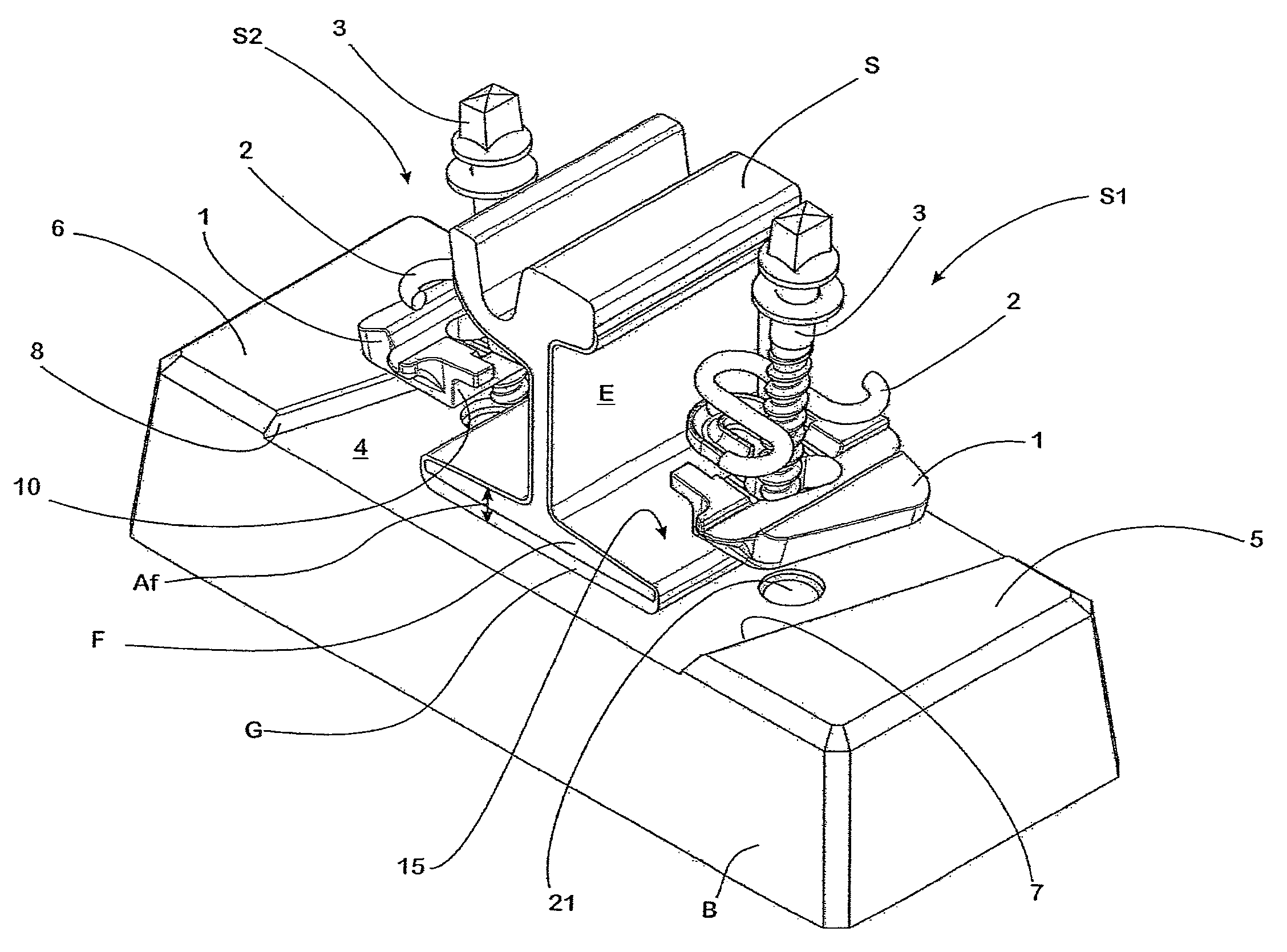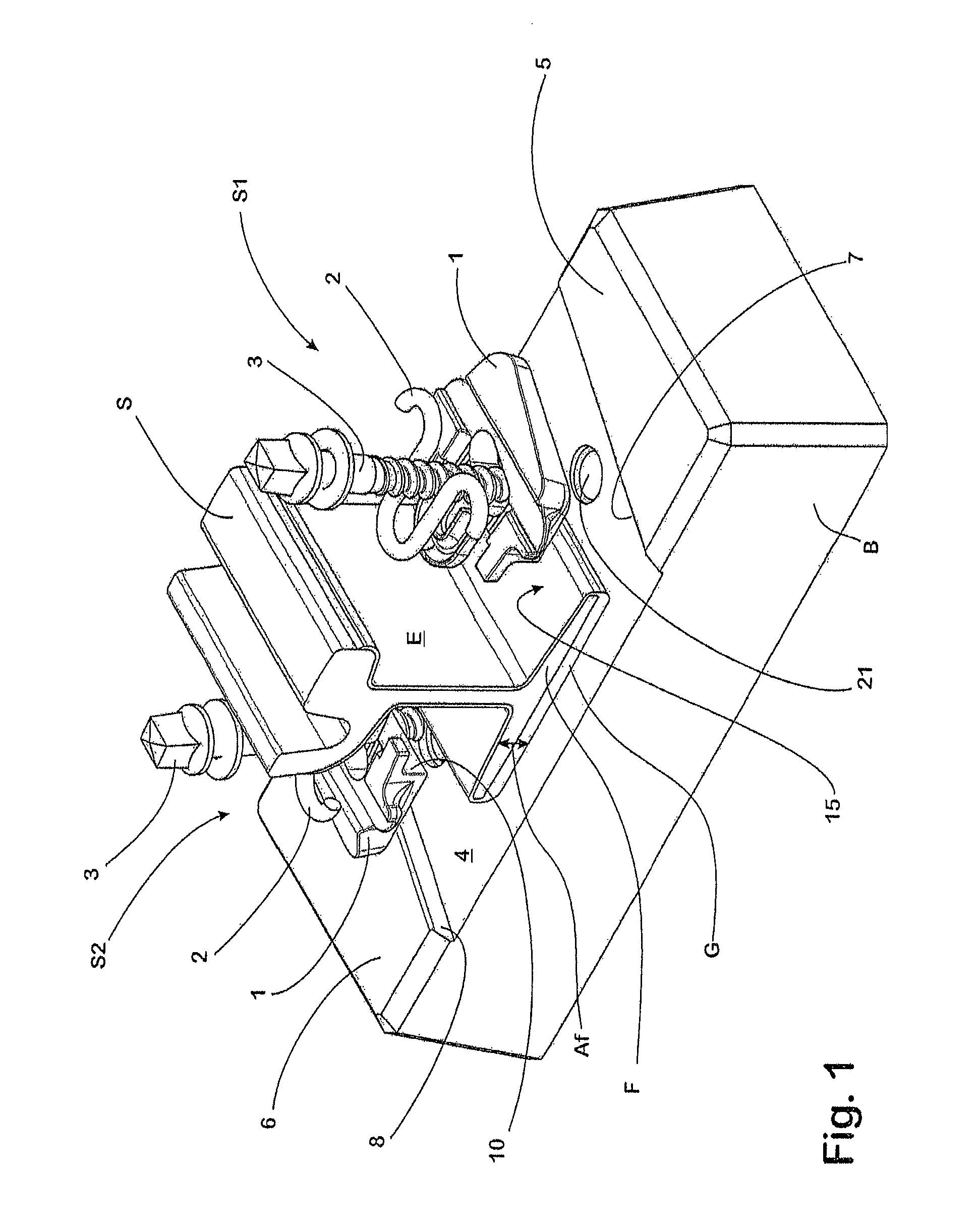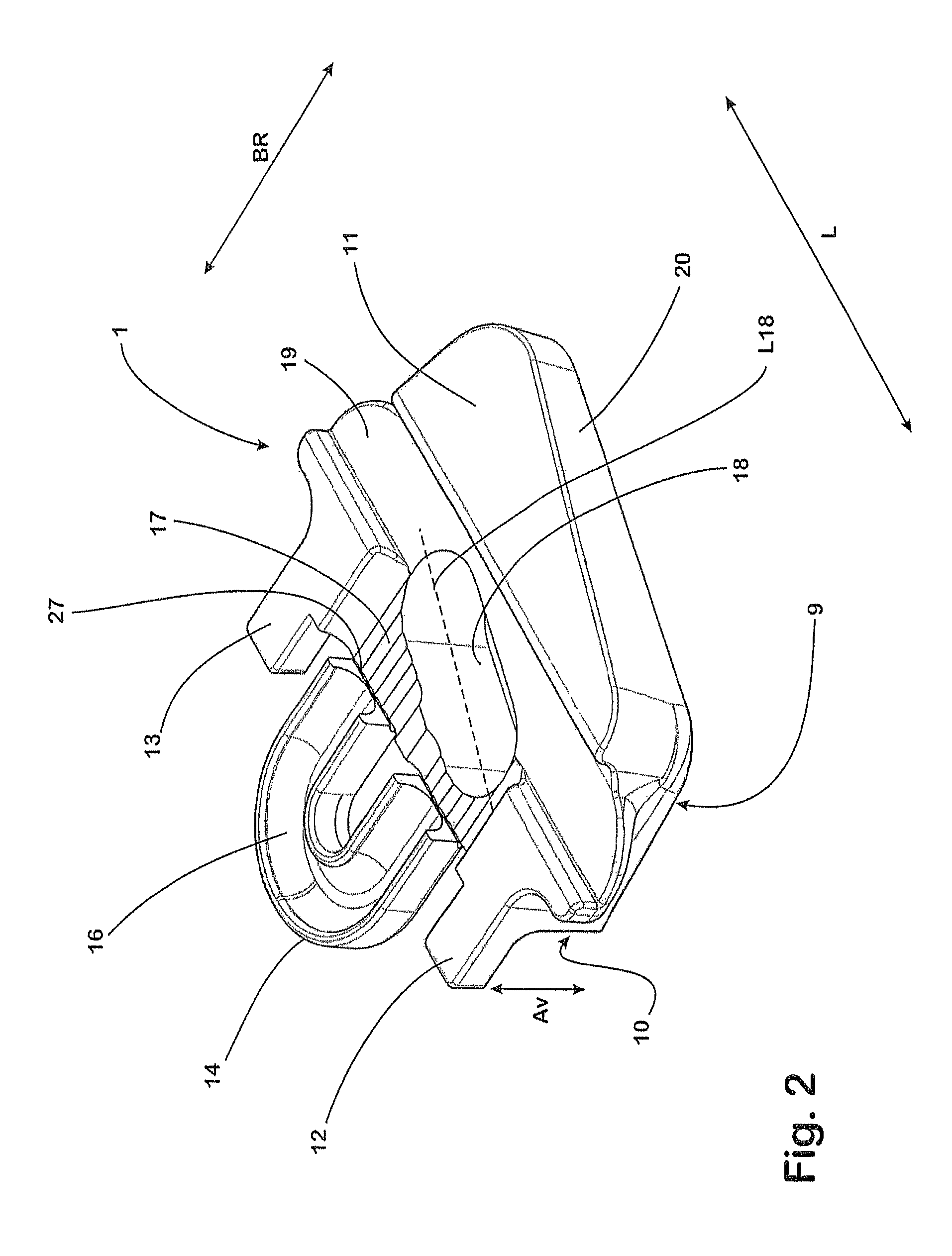System for fastening a rail in place and fastening for a rail
a technology of rails and fastening devices, applied in the direction of railway tracks, roads, constructions, etc., can solve the problem that the fastening process requires maintenance after only a comparatively short period of operation, and achieve the effect of minimising the emitted sound
- Summary
- Abstract
- Description
- Claims
- Application Information
AI Technical Summary
Benefits of technology
Problems solved by technology
Method used
Image
Examples
Embodiment Construction
[0045]The rail S takes the form of a type of grooved rail and the fastening thereof to a solid base formed by a concrete sleeper B is accomplished by means two systems S1, S2 of similar design which each comprise a guide plate 1, a resilient member 2 and, as a clamping member, a clamping screw 3.
[0046]Formed in the concrete sleeper B is a plane supporting surface 4 which, at its longitudinal edges, meets the longitudinal sides of the sleeper B and which is bounded by respective shoulders 5, 6 at its narrow sides. The contacting surfaces 7, 8 of the shoulders 5, 6, which are associated with the supporting surface 4 and extend parallel to one another, each meet the longitudinal edges of the supporting surface 4 at an acute angle, thus giving the supporting surface 4 the form of a parallelogram in plan.
[0047]Each guide plate 1, which is made of a non-conductive plastics material which is for example fibre-reinforced, has on its underside a supported surface 9 by which it rests on the s...
PUM
 Login to View More
Login to View More Abstract
Description
Claims
Application Information
 Login to View More
Login to View More - R&D
- Intellectual Property
- Life Sciences
- Materials
- Tech Scout
- Unparalleled Data Quality
- Higher Quality Content
- 60% Fewer Hallucinations
Browse by: Latest US Patents, China's latest patents, Technical Efficacy Thesaurus, Application Domain, Technology Topic, Popular Technical Reports.
© 2025 PatSnap. All rights reserved.Legal|Privacy policy|Modern Slavery Act Transparency Statement|Sitemap|About US| Contact US: help@patsnap.com



